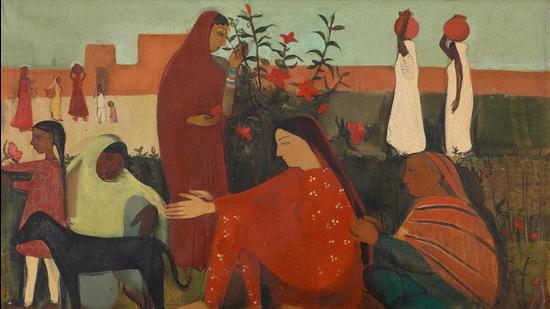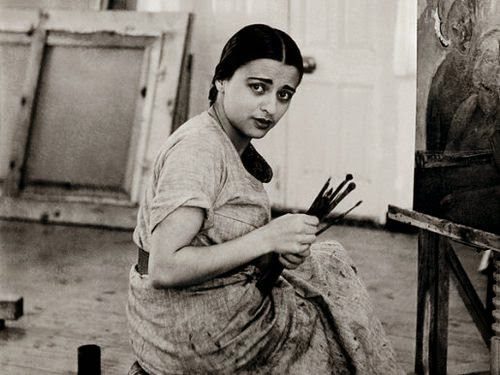In the Ladies’ Enclosure (1938), a painting by Amrita Sher-Gil, sold for Rs 37.8 crore (USD 5.14 million). It was at Saffronart’s auction in Mumbai on Tuesday. This is the artist’s highest auction price and the second-most costly artwork created by an Indian.
Untitled (1961) by V S Gaitonde, sold for Rs 39.98 crore in March this year at Saffronart. It remains the most expensive work by an Indian artist. According to art market intelligence Artery India, the previous record for Sher-Gil was Rs 18.7 crore for The Little Girl in Blue (1934) at Sotheby’s auction in Mumbai in 2018.
Tuesday’s record-breaking sale, according to Saffronart CEO and co-founder Dinesh Vazirani, was “a clear indication of Sher-Gil’s artistic merit”. “It is a rare work of the artist from that particular period to emerge in the art market… Sher-Gil painted this work [In the Ladies’ Enclosure] in the final years of her brief but exceptional life,” he said.
India’s national treasure

Sher-Gil is India’s most famous female artist. Also, the Indian government has designated her as a “National Treasure,” making it illegal to export her work. The Indo-Hungarian artist died in 1941 at the age of 28.
A group of women and a dog are gathering by a beautiful hibiscus shrub in the Ladies’ Enclosure, oil on canvas measuring 21.5 x 31.5 inches. A bride in a vermillion salwar kameez stands in the center. Others are present, such as the lady plaiting the bride’s hair and a young child admiring a hibiscus flower.
The figures are “portraits” of people who Sher-Gil knows, all living in the family estate at Saraya, Gorakhpur, over long periods of time, according to artist Vivan Sundaram, Sher-Gil’s nephew. “There is a personal informality to their representation,” he writes.
“This painting is among the artist’s most dense compositions to be featured for sale, at auction or privately, and painted during a crucial phase within the artist’s short-lived practice. Given its rarity and importance, it should have achieved a higher price, and will serve its collector richly as a capital asset, in addition to its unparalleled historicity and cultural bearings,” said Arvind Vijaymohan, CEO of Artery India.
More about Amrita Sher-Gil

Other Sher-Gil’s works, such as Bride’s Toilet (1937) and Village Scene (1938), have similar intricate compositions.
Sher-Gil pursued art in Paris as a youngster. She naturally drew to art. She studied the academic style of painting there. In 1934, she returned to India, marking the start of stylistic development and a greater connection to her Indian heritage. She traveled much of the nation, taking in the sights, sounds, and people before settling in Saraya.
Her color pallet evolved dramatically, from blues and greens to earthy reds and browns, and she became increasingly influenced by Ajanta and Ellora cave paintings, as well as Rajput and Pahari miniature paintings. It is in this change that viewers can locate In the Ladies’ Enclosure.
While Sher Gil’s work on paper is frequently auctioned, her paintings are rarely offered for sale. According to Artery India’s records, just 68 works by Sher-Gil have been auctioned in the last 34 years, with sales totaling Rs 193.1 crore. Only 16 of the pieces were canvas paintings.






